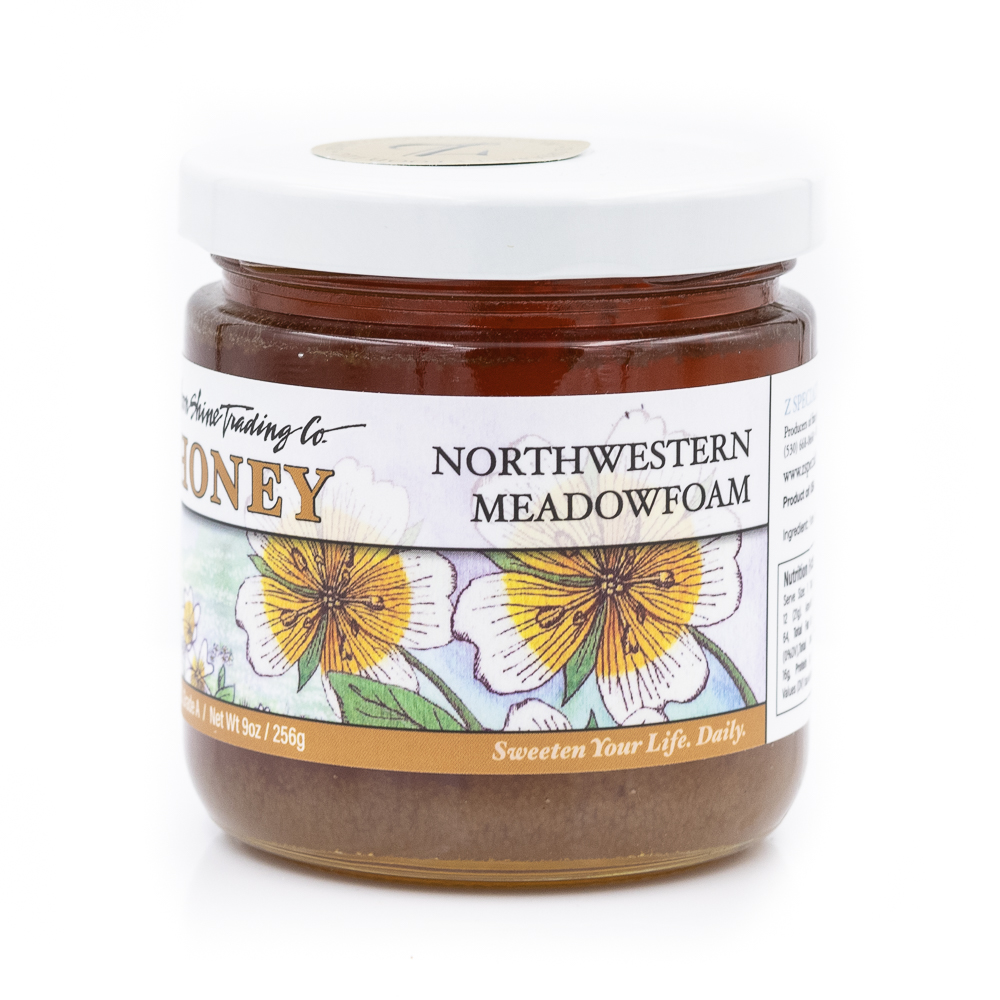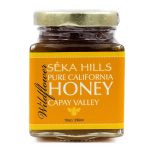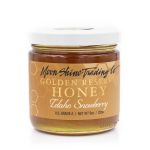Excerpt from Ari’s Top 5 enews
Manna for sweet eaters, and a great way to ring in a sweet New Year
 The arrival of Rosh Hashanah reminds me each year to again appreciate the flavor of the many extraordinary varietal honeys we have on hand every day. Given that I grew up with the same standardized, highly processed and pasteurized commercial honey in the ubiquitous plastic bears, every time I taste one of the two dozen or so traditional varietal honeys we have on the Deli’s shelves my mind is blown anew. It’s easy to take honey for granted—it’s much, in my mind, akin to what Georgia O’Keefe once wrote about flowers, the same flowers on which bees are buzzing around to gather pollen with which to make honey in the hive:
The arrival of Rosh Hashanah reminds me each year to again appreciate the flavor of the many extraordinary varietal honeys we have on hand every day. Given that I grew up with the same standardized, highly processed and pasteurized commercial honey in the ubiquitous plastic bears, every time I taste one of the two dozen or so traditional varietal honeys we have on the Deli’s shelves my mind is blown anew. It’s easy to take honey for granted—it’s much, in my mind, akin to what Georgia O’Keefe once wrote about flowers, the same flowers on which bees are buzzing around to gather pollen with which to make honey in the hive:
A flower is relatively small. Everyone has many associations with a flower—the idea of flowers. You put out your hand to touch the flower—lean forward to smell it—maybe touch it with your lips almost without thinking—or give it to someone to please them. Still—in a way—nobody sees a flower—really—it is so small—we haven’t time—and to see takes time, like to have a friend takes time.
The same is true, I believe, of taste—eating too quickly causes us to miss the majesty and marvel that’s embedded in any great meal. If you want to be reawakened to the wonder of great varietal honey—whether it’s to eat it with apples for Rosh Hashanah, to spread on a simple slice of toast, or do what I do and eat it by the spoonful, Meadowfoam honey might just do the trick.
The Meadowfoam plant is essentially unknown in Michigan—it doesn’t do well in really wet environments—but it grows well out west, primarily in southern Oregon and northern California. It’s economically and historically famous because of its oil, which was used in the 19th century as a replacement for the then very popular but increasingly hard to get sperm whale oil (if you’re curious, it was used a lot in high-end cosmetics). The flowers are small and white and close to the ground, hence the name “meadowfoam”—they look a bit like seafoam spreading across a meadow. The honey itself is inspirationally excellent. I should note that the bees don’t make Meadowfoam honey every year—conditions in the ecosystem need to be just right—so I feel especially fortunate to have it on hand now.
Since Rosh Hashanah is around the corner, it’s not hard for me to imagine Meadowfoam from Moon Shine Trading Co. as a sort of modern-day “manna for sweet eaters.” This honey has it all! An incredible range of health benefits. A natural agricultural upside (Meadowfoam is used in the pasture to break disease cycles and restore health to ecosystems). And most importantly, at least for our purposes here, a flavor that seems to combine classic confections that tickle historical (non-chocolate) American fancies into a single, all-natural, all good for you, jar of honey. I’ve seen Meadowfoam honey variously described as akin to eating “cupcake frosting,” “cotton candy,” and “marshmallows.” When I eat it, sure enough, it reminds me of all of them. I also think about caramel, Crème Brûlée, brown sugar, and vanilla cream custard. It is remarkable!
What do you do with it? Spread on top of warm toast. Eat it with yogurt. Put some on a plate and pour olive oil over top (scoop up with torn pieces off a fresh loaf of Paesano bread from the Bakehouse). Whatever you do, take a minute to appreciate its aroma and flavor. It’s a special experience. As Russian poet Anna Akhmatova once wrote:
Wild honey smells of freedom
The dust—of sunlight
The mouth of a young girl, like a violet
But gold—smells of nothing.



